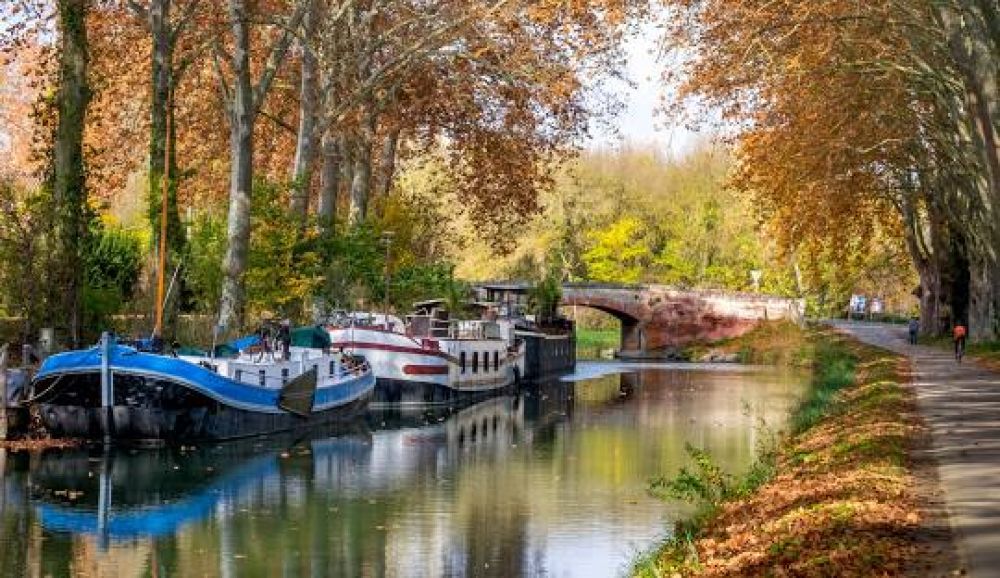

The Canal du Midi is a remarkable feat of engineering and a precious jewel in the crown of Toulouse, France. This 17th-century canal, listed as a UNESCO World Heritage site since 1996, stretches over 240 kilometers, connecting the Garonne River to the Étang de Thau on the Mediterranean. Conceived by Pierre-Paul Riquet, its construction began in 1667 and was completed in 1681, shaping the economic and social landscapes of the Languedoc region ever since.
Originally built to facilitate the wheat trade, the Canal du Midi's role evolved significantly over the centuries. By the 19th century, with the advent of the railroad, the canal's economic importance waned, but it gave way to a new purpose — tourism. Slowly, the scenic beauty and serenity of the canal started attracting travelers and artists, drawn to its tranquil waters and shaded banks lined with plane trees.
During the 20th century, particularly post World War II, the canal experienced a renaissance in tourism. The development of the pleasure boating industry allowed visitors to experience the Canal du Midi from a different perspective. Old trade barges, known as "péniches," were converted into tourist boats, cruising the waters and providing a leisurely way to enjoy the French countryside.
In recent years, the Canal du Midi has seen a surge in eco-tourism and sustainable travel. Tourists are increasingly seeking out activities with low environmental impact, and the canal offers many such opportunities. Cycling along its well-maintained towpaths has become especially popular, allowing visitors to take in the picturesque villages and vineyards that punctuate the route. Moreover, the emphasis on slow tourism means that many travelers are spending more time in one place, engaging in local culture and traditions.
Wine tourism is another growing trend in this region of France. Visitors often combine canal tours with wine-tasting experiences, enjoying the renowned wine production areas of Minervois and Corbières which are easily accessible from the canal.
Agri-tourism is also growing, with many farms and vineyards offering tours and stays, contributing to the sustainable tourism approach by integrating visitors into the rural lifestyle of the Toulouse region.
While tourism brings economic benefits, it also presents challenges for conservation. The canal's ecosystem has been under threat, with the necessary removal of thousands of plane trees due to a fungal infection. However, there are ongoing efforts to replant disease-resistant species and preserve the beauty and integrity of the Canal du Midi for future generations.
In conclusion, the Canal du Midi in Toulouse stands as a testament to the intertwined history of commerce, engineering, and leisure. From its initial function supporting trade to its current role as an enchanting tourist destination, it thrives today as a place where history is preserved, and visitors can explore at the gentle pace of its flowing waters.